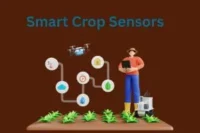6 Simple Yet Powerful Ways to Prevent Soil Erosion
Published: 27 Mar 2025
Soil erosion is a growing global issue, with an estimated 75 billion tons of fertile soil lost every year due to wind, water, and human activity. According to the Food and Agriculture Organization (FAO), nearly 33% of the world’s soil is degraded, affecting agricultural productivity, food security, and the environment. As topsoil, the most nutrient-rich layer, is washed away, farmers face reduced crop yields and increased costs, while ecosystems suffer from habitat loss and water pollution. Preventing soil erosion is critical to ensuring sustainable agriculture, protecting natural resources, and securing the future of our planet.
So, guys, without wasting time, let’s jump into the article 6 Simple Yet Powerful Ways to Prevent Soil Erosion
What Causes Soil Erosion?
Soil erosion occurs when wind, water, or human activity strips away the top layer of soil, which is the most fertile and essential for plant growth. The main causes of soil erosion include:
- Heavy rainfall and water runoff
- Deforestation and poor land management
- Overgrazing by livestock
- Intensive farming without soil protection measures
When soil erodes, it leads to reduced crop yields, loss of fertile land, and environmental damage. Understanding the causes is the first step to effective prevention.

2. Plant Ground Cover for Natural Protection
Fact: Ground cover plants like grasses, legumes, or cover crops prevent soil erosion by acting as a shield against wind and water.
- Prevents soil erosion
- Reduces water runoff
- Improves soil fertility
- Increases water retention
- Common ground cover plants: grasses, clover, legumes
- Action Tip: Plant cover crops like ryegrass, vetch, or clover
- Get smarter responses,
3. Use Mulching to Retain Soil and Moisture
Fact: Mulching is one of the simplest and most effective ways to protect soil from erosion. Prevents soil erosion
- Prevents soil erosion
- Retains moisture in the soil
- Reduces water runoff
- Suppresses weed growth
- Improves soil structure and fertility
- Common mulching materials: straw, leaves, wood chips
- Action Tip: Apply mulch around crops and garden beds to protect soil and conserve water
4. Implement Contour Farming for Sloped Land
Fact: Contour farming involves planting crops along the contours of the land rather than in straight rows.
- Reduces water runoff
- Prevents soil erosion on slopes
- Follows the natural contours of the land
- Slows down water flow, allowing it to soak into the soil
- Improves water absorption and soil retention
- Action Tip: Plant crops along the contours of sloped land to minimize erosion and maximize water retention
5. Build Terraces to Prevent Water Runoff
Fact: Terraces are flat platforms built on hilly or mountainous land to reduce the speed of water runoff.
- Reduces water runoff on steep land
- Creates flat surfaces to slow down water flow
- Prevents soil erosion by trapping water
- Improves water retention and soil fertility
- Ideal for hilly or mountainous terrains
- Action Tip: Construct terraces on slope

6. Practice Agroforestry to Enhance Soil Health
Fact: Agroforestry integrates trees with crops and livestock, creating a natural barrier against erosion.
- Integrates trees with crops and livestock
- Reduces soil erosion by anchoring the soil with tree roots
- Enhances biodiversity and supports ecosystems
- Improves soil fertility through organic matter from trees
- Provides additional income from timber, fruits, or nuts
FAQs about Soil Erosion
Here are some of the most frequently asked questions about 6 Simple Yet Powerful Ways to Prevent Soil Erosion.
- Answer: Soil erosion is the process where the topsoil is worn away by wind, water, or human activity, leading to the loss of fertile soil and decreased agricultural productivity.
- Answer: Soil conservation is crucial for maintaining healthy soil, improving crop yields, protecting the environment, and ensuring sustainable agriculture for future generations.
- Answer: Ground cover plants protect the soil by reducing water runoff, stabilizing the soil with their roots, and preventing wind erosion, all while improving soil fertility.
- Answer: Mulching involves placing a layer of organic material on the soil surface. It helps prevent soil erosion by reducing water runoff, conserving moisture, and protecting the soil from wind and rain.
Answer: Agroforestry integrates trees with crops and livestock, providing natural barriers against soil erosion, improving soil fertility with organic matter, and enhancing biodiversity.
Conclusion:
Soil erosion is a serious issue that affects the productivity of land and the health of our environment. By using these simple and effective methods—such as planting ground cover, mulching, contour farming, building terraces, and agroforestry—you can make a significant impact on reducing erosion. Protecting the soil is not just for farmers; it’s for everyone. Healthy soil means a healthier planet, better crops, and a sustainable future for all.

- Be Respectful
- Stay Relevant
- Stay Positive
- True Feedback
- Encourage Discussion
- Avoid Spamming
- No Fake News
- Don't Copy-Paste
- No Personal Attacks

- Be Respectful
- Stay Relevant
- Stay Positive
- True Feedback
- Encourage Discussion
- Avoid Spamming
- No Fake News
- Don't Copy-Paste
- No Personal Attacks






